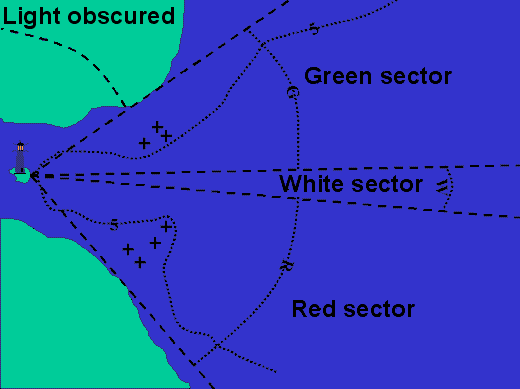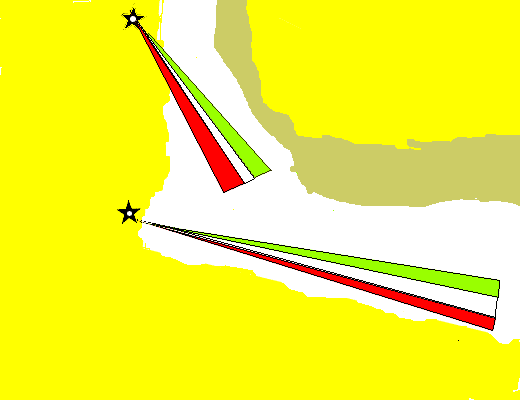In complex situations, when entering harbour or passing through a complicated area of hazards there will normally be a simple passage through, marked by sectored lights.
If this is the case, the focus of the navigator must be tracking those major lights and ensuring that the vessel remains in the correct sectors and is turned at the appropriate moment. It can be very tempting to monitor all the lights in visual range, if you do, you will almost certainly be overwhelmed with information and unable to remain in safe water.
It is better to use the sectored lights to remain in safe water, then to use lights on buoys and beacons to give a distance run as each mark. If this is done, all the navigator need do is to tick off on the chart, each mark as it is passed.
An example of this occurred when I was beating in towards Morlaix in Brittany, at night. I realised I was attempting to track the bearings of about 10 lit buoys or beacons, with the rapidly changing angles and aspects as the vessel tacked it was impossible to keep a good idea of our position. I suddenly realised that there were only three sectored lights that were arranged to lead me in to the channel and to avoid the dangers. Once I had simplified the plan, it became easy to be certain of remaining in safe water.
If this passage had been properly prepared I would have noticed the arrangements of the lights and the entrance would have been much less stressful!
A good pilot book will list the sequence of lights to be followed and should be the first place to look when starting to develop the pilotage plan.
Arrangements of lights
A common arrangement of sectored lights when approaching a harbour is to find the safe sector is white, and the sector when the vessel is too far to starboard is green with the too far to port sector being red. However, always consult the chart.

When seen from seaward, this combination would appear as below. Run the cursor over the approach to see the light change.
Complex approaches
Major harbours or places with especially complex approaches will utilise a series of sectored lights. The navigator need only position the vessel in the first correct sector, then follow it until the next is reached. A typical example is illustrated below.

In this example the vessel should remain in the first white sector until it has crossed into the second, then it should turn on to the new course.
Most harbours that employ sectored lights have a buoy positioned in the safe sector at the entrance. A prudent navigator will slow or stop near this buoy, this gives them time to ensure that they have correctly identified the first light and they may be able to identify some of the lights further into the harbour. This will make spotting the point at which the course should be altered easier to spot when the background street lighting may be obscuring the navigation lights.
The final entrance should only be made when the major lights have been identified for certain; a final check that the bearings are correct may be required. If the last part of a passage is rushed it is very easy to make mistakes, there have been cases of yachts entering the wrong harbour, and the crew being convinced that they have seen the correct light sequences!
Sailtrain.co.uk is free to use, but if you feel you would like to contribute to the running and development costs you can donate via Paypal:
Additional Resources:

